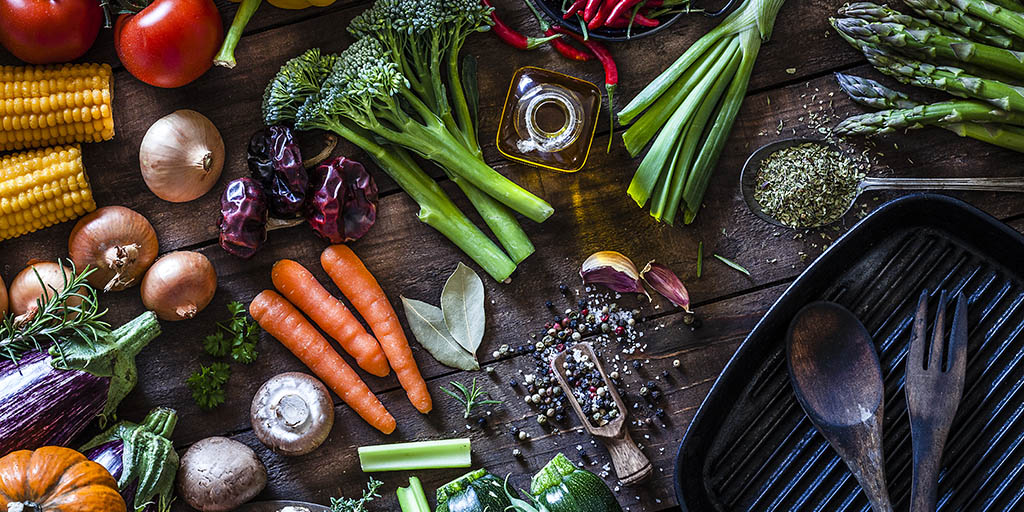Healthy eating habits are not a hassle
 CREDIT: ISTOCK (FCAFOTODIGITAL)
CREDIT: ISTOCK (FCAFOTODIGITAL)Meal prepping is an essential way to help keep you on track for a healthy lifestyle.
One of the most common New Year's resolutions is to weight loss.
While it is difficult for students on a budget to juggle schoolwork and meal prepping, Fanshawe's food and nutrition program representatives offer some helpful advice to students looking to develop affordable healthy eating habits and debunk myths associated with whole foods.
There is a common misconception that eating healthy could be more expensive.
Tracy Jones, program co-ordinator of Nutrition and Food Service Management program, challenges this perception by offering a solution: eating in season.
Eating in season a way to keep a svelte budget while keeping whole foods in a student diet.
“If you're eating in season, produce will be reasonably priced,” Susan Brush, professor of Food and Nutrition program at Fanshawe College, said. When in season, strawberries might cost $3 a pint, but “if you're eating strawberries in December, you're going to be paying a little more”.
To ensure students are getting the best deal, Brush suggests downloading Flipp. This app centralizes all flyers and coupons from different stores and helps students pricematch necessary items on their grocery lists, regardless of the location of the deal.
“If you found grapes in Ottawa at a small family-run grocery store and it had advertised it at a certain price, you can snap it on the Flipp app so that you can price-match at the store,” Brush said.
Another way to budget groceries is to limit the amount of animal proteins. Instead of chicken, pork, or beef, a way to maintain protein intake is with legumes, beans, and nuts.
As most vegan and vegetarian diets are less protein rich, this can lead to a “deficiency of amino acids”, Jones said. To combat this and be mindful of a strict budget, Jones suggested supplementing vegan diets with canned legumes and fruits, as long as they are canned in water. Any products with added sodium can be rinsed as it can “reduce the sodium content by up to 60 per cent”.
For those who want to keep animal products in their diets, Jones suggested visiting the student deli as it offers “high-quality food products with great ingredients sold at a very reasonable price”. The products are modestly priced because Fanshawe's deli doesn't pay upcharges and because of low labour costs (as the labour force is comprised primarily of students).
Jones cited an example of a homemade sandwich from the deli with four ounces of meat as costing $5 to demonstrate the moderate pricing.
Another way to maintain the presence of animal proteins in a student budget is to buy more at one time.
“If you know that you want chicken twice that week, buy a whole chicken and cook it off. A whole chicken might cost $8, but then you have a whole chicken that will last you a lot longer,” Brush said.
Being able to eat whole foods that are rich in nutrition on a budget means that there is no excuse for students to continue their “chicken nugget and fries” lifestyle. Instead, both specialists agree that high quality whole foods will increase energy and eliminate the intake of extra calories that processed foods come with.
Susan's Sample Grocery List
A dozen eggs
A whole chicken/ beans (canned beans are cheap); make sure they're canned in water and make sure they didn't add sodium. If you rinse them in water for two minutes, you can reduce the sodium for 60 per cent.
Rice
Loaf of brown bread (whole grain bread)
Two to three different kinds of vegetables (two peppers, three cucumbers, pint of cherry tomatoes)
Three different types of fruits (bunch of bananas, six apples, bag of grapes)
Dairy (cottage cheese or yogurt)
Tracy's Sample Grocery List
A dozen eggs
Yogurt
Chicken
Chickpea
Three types of vegetables (onions, carrots, and pepper)
Fruits (bananas and any berries in season)
Nuts (to snack on)
Tip: Don't pick fruits and vegetables with the same colours as there are different nutrients in each type.














